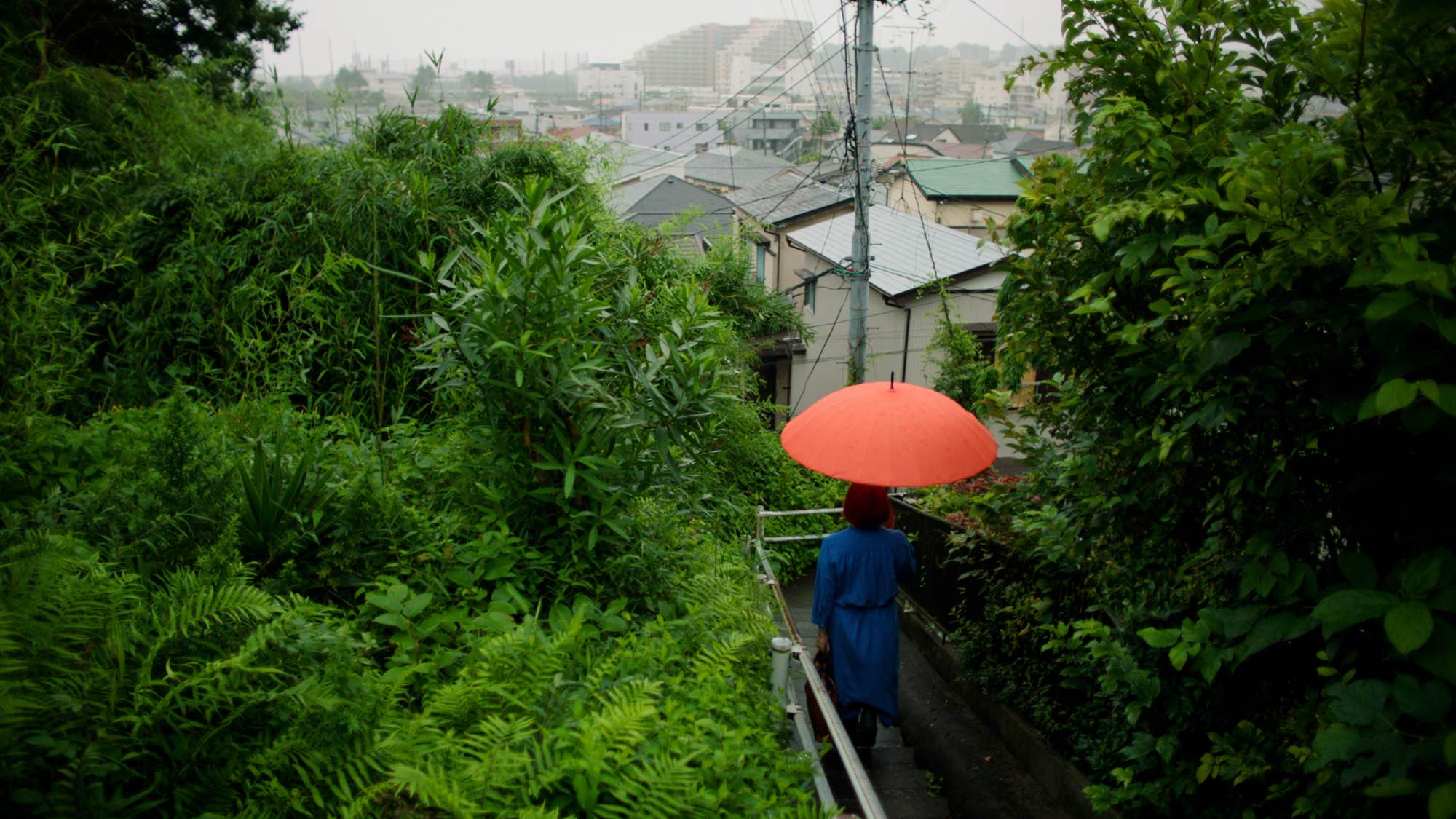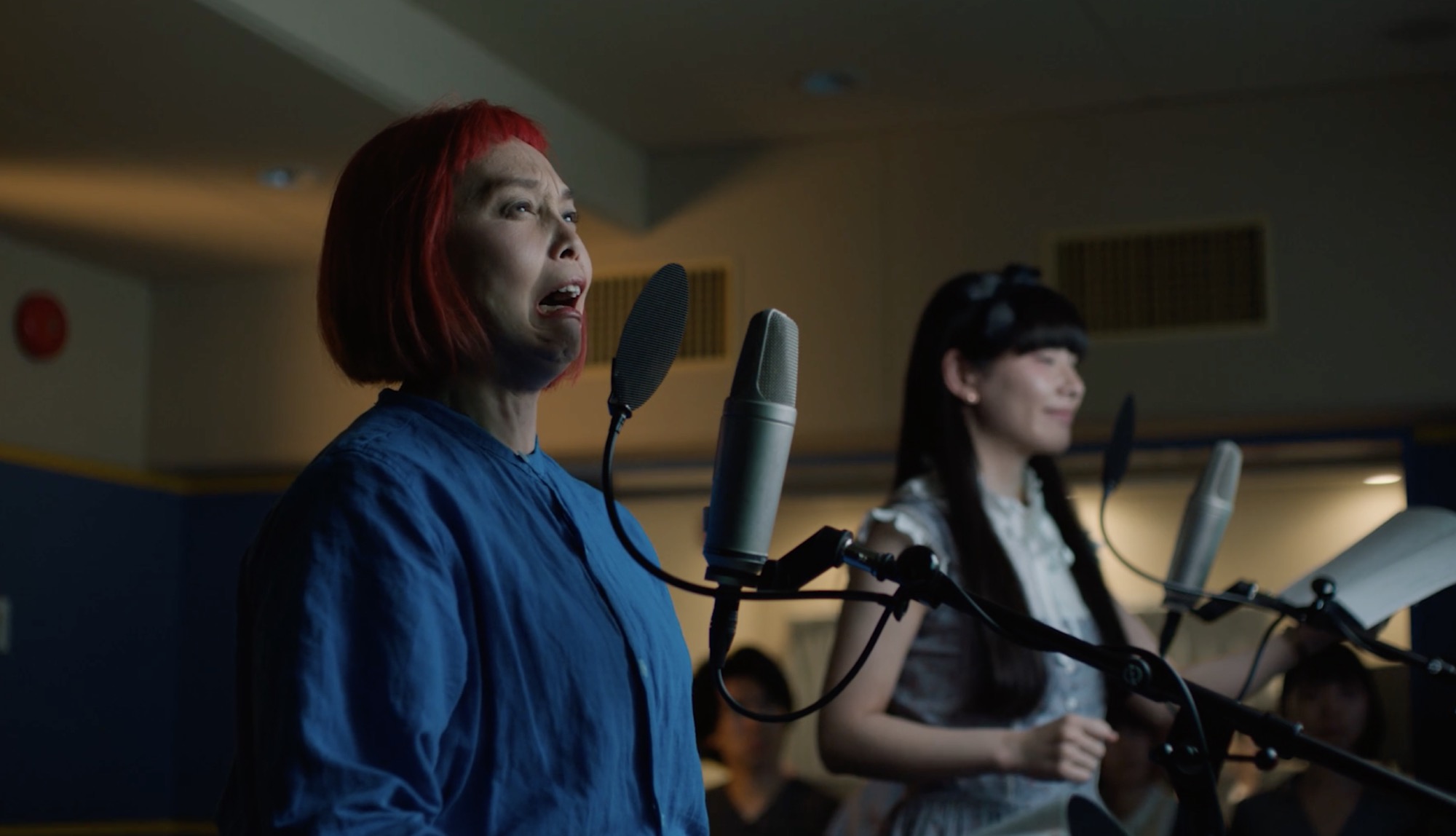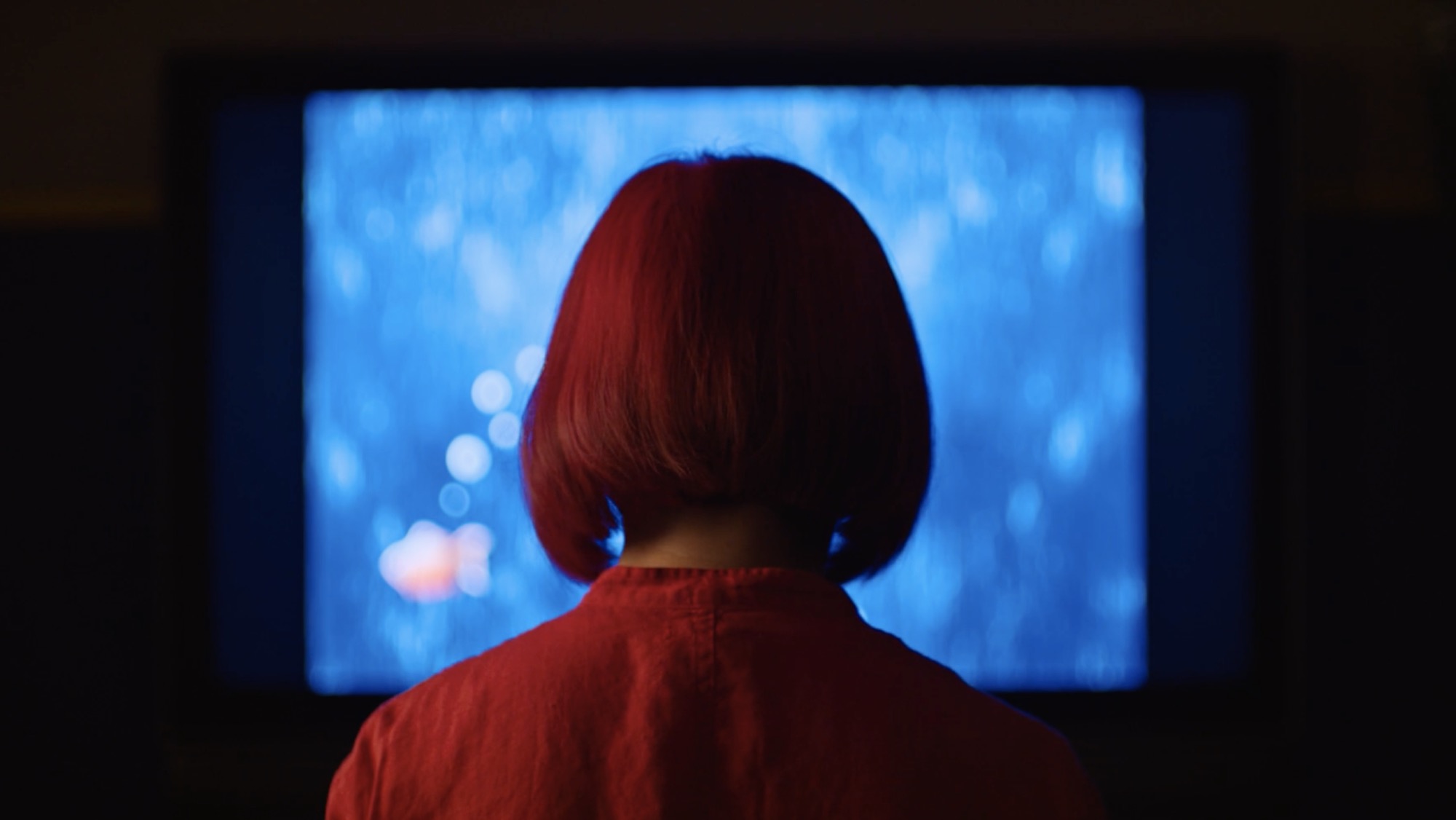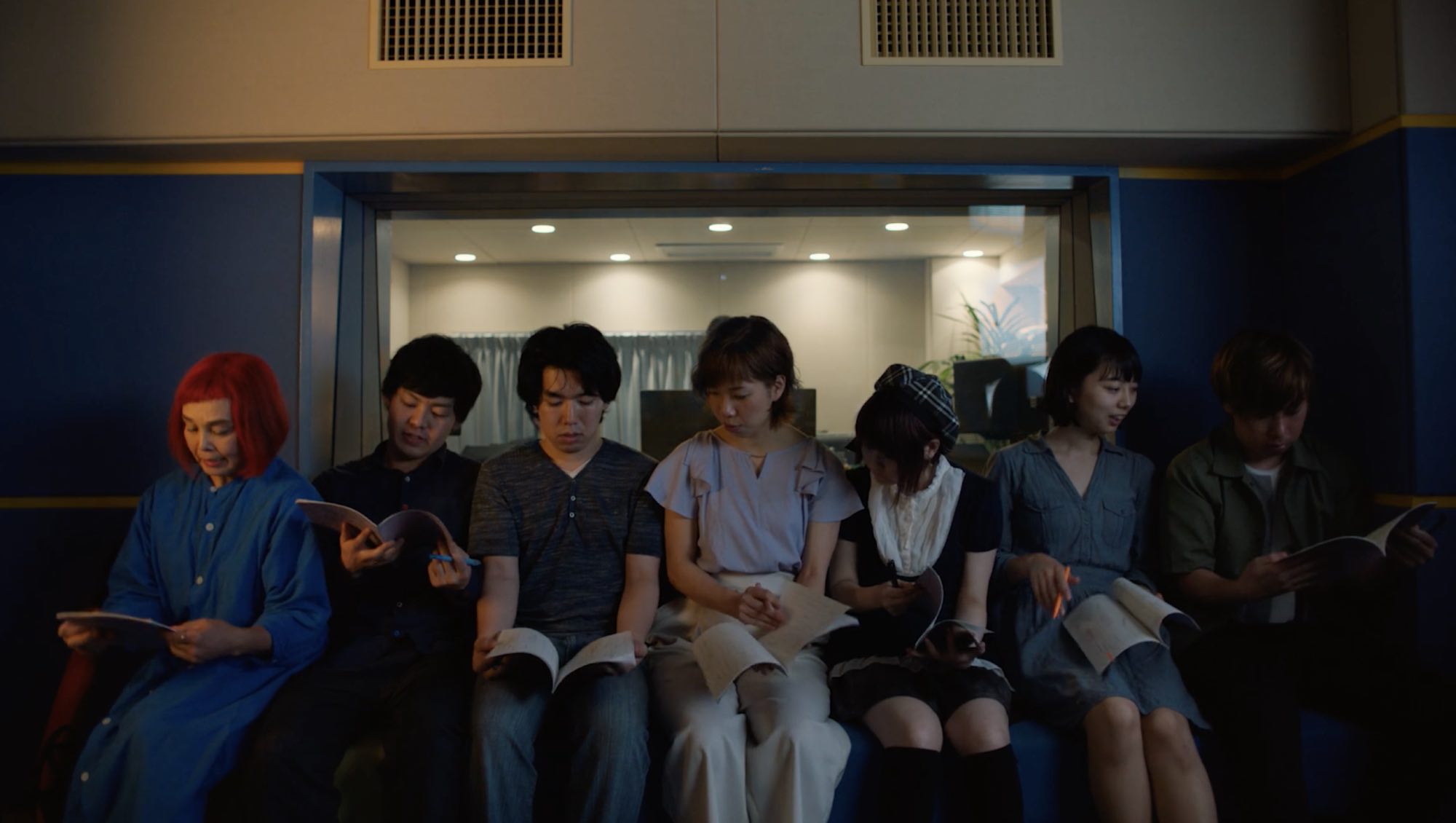
Throughout her career Director Anna J. Takayama has strived to explore the untold stories of those society looks away from. Often told with a personal and close-to-the-heart focus, Takayama’s stories peel back the curtain on those who are underrepresented on screen. In The Voice Actress, her latest short, this focus is centred on Japan’s anime industry and the life of Kingyo, a veteran voice actress. Takayama employs a striking backdrop and uplifting story to display the struggles of those working in this ever-changing industry, revealing how a creative imagination, a good heart and a pet goldfish can oppose those in higher power. DN delves into the SXSW Special Jury Award-winning short in our interview with Takayama, who reveals more about the familial ties that inspired the film, her colour-based creative choices, and the conflicted opinions she has on the industry she’s now within.
First and foremost, could you reveal the inspiration and ideas that made you want to focus on the life of a voice actress for this project?
It’s important to me to tell stories that are authentic at their core. I’m also primarily interested in telling stories that haven’t been told yet. The actress who plays the protagonist, Kingyo, is my mother, Urara Takano. She’s been a voice actress in Japan for over 30 years and was my initial inspiration to tell the story of voice actors and voice acting in Japan. I grew up watching my single mom working all the time, going into recording booths voicing characters in anime and doing dubs for films and TV shows. Having seen my mom work as a voice actress, I felt like this was a world and subject matter that was close to me. When I was little, I also had the opportunity to dub a few films and shows – if you ever watched Robert Rodriguez’ The Adventures of Shark Boy and Lava Girl in Japanese I did the voice of Lava Girl.
Voice acting is a world that we rarely see on screen. I’m inspired by stories that don’t always get the spotlight, whether it’s about an industry, profession or groups that don’t get representation often on screen. Having been born in the US, raised in Japan and coming from two disparate, almost opposing cultures, I often feel that I don’t belong anywhere and I think that sense of isolation and alienation somehow made its way into the film.
I’m inspired by stories that don’t always get the spotlight, whether it’s about an industry, profession or groups that don’t get representation often on screen.
When you’re telling a story about a world or group that’s rarely covered on screen, there’s a tremendous amount of pressure and responsibility. My film isn’t a documentary. My mom in real life is nothing like Kingyo and the audition scene at the end is almost a fantasy, but throughout the process, I made sure to consult with her so that there was some level of authenticity to the world I was depicting. I grew up talking to my mom about what it’s like to be a voice actress and in recent years particularly, what it’s like to be an aging voice actress in an industry that seems to be getting younger. There seemed to be common themes between her experience and my own feelings of alienation.

Being currently based in LA, how did you find it filming in and exploring Tokyo?
I currently live in LA, but I was raised primarily in Tokyo and my family still lives in Japan. I try to visit as often as I can and every time I go back I’m so inspired by the landscapes there. We shot the recording studio scenes in Tokyo, but the other scenes were shot in Kanagawa prefecture, in an area about 30 miles south of Tokyo. We shot the scenes of Kingyo’s house at my mom’s actual house and a lot of the outdoor scenes in surrounding areas. We had limited resources so it was the most efficient way to shoot the film. Whenever I went back, I tried to location scout potential areas and take tons of pictures. I did that while I was writing the script so I knew most of the locations that we would shoot in before I finished the script. That was really helpful. I had never been to the recording studio in Tokyo until the day of the shoot, but I saw photos and was convinced this would work out.
When you’re telling a story about a world or group that’s rarely covered on screen, there’s a tremendous amount of pressure and responsibility.
Getting permission in some of the locations was definitely tricky. We had to submit applications to the nearby police precinct with hand-drawn maps and ideas of where we were going to place the crew. It was a rigorous process, but we had some fantastic local producers like Kumi Nemoto, Natsuki Kato and Kyo Yaoya to help us navigate everything. A lot of local people were very supportive, including the train station staff for the train platform scenes. They rarely had film crews to shoot films so I think they were excited. Their support was incredibly moving and meaningful. At the time of the shoot, I was living in New York and a few people on our crew did too. We flew them out to Japan for the shoot so it really became a true international production. We ran a month-long crowdfunding campaign and the bulk of the costs went to getting our crew out to Japan.
Could you discuss the thought process behind the colour palette and visual aesthetic of The Voice Actress?
From the start, I knew I wanted to play with blues, the water, and red/oranges, the goldfish. This was on my mind for every scene and every character. I had most characters except Kingyo wear blue outfits because I wanted them to feel like waves in the ocean. I’m fascinated by color theory and how the human eye works. Since orange and blue are complementary colors, the colors pop more. I also looked at a lot of references, from Matisse and Van Gogh paintings to a wide range of films that used color theory. My friend Sheena Miyake has a beautiful Instagram where she curates different images by different colour tones and I got a lot of visual inspiration from her, too. I rewatched some films that inspired me: A Fantastic Woman by Sebastián Lelio, Wong Kar-Wai films, Studio Ghibli films, Jean-Pierre Jeunet’s Amélie, Perfect Blue by Satoshi Kon and I think I was also thinking about how filmmakers like Hitchcock and David Lynch used blues and reds in their films. A lot of times, blues symbolize rationality, logic and male energy and reds symbolize danger, risk and female energy. In Japan, the traffic lights also happen to be blue, which is go, and red, which is stop. I think I was thinking about these ideas and wanted to incorporate them into my film.

How did you look to cinematically represent Kingyo’s perspective in relation to the outside world?
Kingyo is an inward-facing character and I wanted to convey the feeling that she was in a fishbowl. She’s always surrounded by water, whether it’s the waves of strangers walking past her or the pool of young voice actors that surround her in the studio. When I was growing up, I used to sit in the director’s booth and watch my mom work as a voice actress and I remember thinking how similar the experience was to seeing fish at the aquarium. Sometimes, a fish would swim by and stop and stare. You’d have a moment together and it felt really special, even though you weren’t totally sure if you really connected.
Kingyo is an inward-facing character and I wanted to convey the feeling that she was in a fishbowl.
Could you tell us more about the film’s commentary on the world we live in today, specifically regarding the entertainment industry?
My mom had been talking to me about what it’s like to be an aging voice actress in Japan. My mom’s been a voice actress for over 30 years and times have changed tremendously. When she was younger, there weren’t that many voice actors in the industry and it was a very niche profession. Nowadays, there are many young voice actors and even more who aspire to be one. The voice acting industry has become increasingly saturated. I think social media has played a huge part in things like casting as well. I have heard that sometimes voice actors get cast depending on how many followers they have on social media or how internet-famous they are. As an aging voice actress, there are fewer roles and auditions and you also lose mentors who you looked up to who supported you. I think there’s a sense of isolation and alienation, not just in voice acting, but in growing older in general.
There’s also still a huge discrepancy between opportunities for men vs. women in the entertainment industry, especially behind the scenes. It’s gotten a lot better than before, but there’s still room for improvement. This is true in Japan, but I think it’s even truer in the US. As women, we’ve grown so accustomed to men speaking on our behalf and telling our stories, deciding what should or shouldn’t be put on screen, which voices should or shouldn’t be heard. It’s systemic and there’s a long history and legacy that’s hard to change. Sometimes, it feels like we’re trapped and sometimes, it feels like all we can do is scream.

What attracted you to create the character of Asatte, Kingyo’s well-loved goldfish?
When my mom was younger, she had a peculiar dream of a flying goldfish. For this reason, her nickname used to be Kingyo, which translates to ‘goldfish’ in Japanese. Also, for whatever reason, there are a few famous veteran female voice actresses in Japan who are named after or coincidentally sound a lot like water creatures, so I wanted to make a tribute to that too.
I have heard that sometimes voice actors get cast depending on how many followers they have on social media or how internet-famous they are.
For example, Tarako, which means pollock roe, Kuijra, which means whale, and Kazue Ikura which can phonetically mean salmon caviar, are all well-known veteran voice actresses in Japan. I was talking to my mom about what we should call the goldfish and she thought of the name, Asatte. ‘Asatte’ means the day after tomorrow in Japanese. She said that Asatte had a distant stare that looked like she wasn’t just facing tomorrow, but facing the day after tomorrow and hence the name Asatte was born. When I was writing the script, I knew I wanted to spotlight the Pearlscale Goldfish, which has its origins in Japan and China and was bred and created through extreme mutations for aesthetic purposes.

“Undefeated by the rain, undefeated by the wind” is a recurring line in the film that really resonates and feels relevant. What does that line mean to you?
Ame ni mo makezu, which translates to Be not Defeated by the Rain, is one of the most famous poems in Japan and it’s extremely familiar to Japanese people. It was written around 1931 by poet and Buddhist Kenji Miyazawa and it was discovered posthumously in his private notebook. Miyazawa was fighting illness at the time but when you see images of his big bold writing in his black notebook you’d never guess that it was written by someone who was sick. To me, the poem is about perseverance in the face of adversity, being modest and humble and having a great sense of empathy for others. It captures everything I wanted to convey in the film. I think there’s a great strength and courage in being kind and empathetic to those around you.
Kindness and empathy may appear subtle, but I think there’s a tremendous power and strength that I wanted to present in Kingyo’s reading of the poem. She’s faced with adversity that comes with aging in an industry that values youth and in an industry where those who judge you often lack empathy. What can she do? She’s staking her claim in the world and proclaiming her will to fight with this poem. In a way, she’s fighting the impossible, whether it’s the nature of passing time and aging or the legacy of an immovable industry, but she’s fighting nonetheless. The first two lines of the poem capture this perfectly.
You released Neko See’s All in 2017, a love story short told from the perspective of a pet cat who ponders the shift in Japanese-American geopolitics. Similarly, The Voice Actress takes a critical approach to society. Will we be seeing more films from you that follow this pattern?
This actually never occurred to me. I think this is why conversation is always an integral part of filmmaking. I consider it to be part of the process. You’ve noticed something I never would have. There’s a short that I’m currently working on that, funny enough, seems to fit this theme. I guess I should challenge myself to make something that would be thematically opposite!


